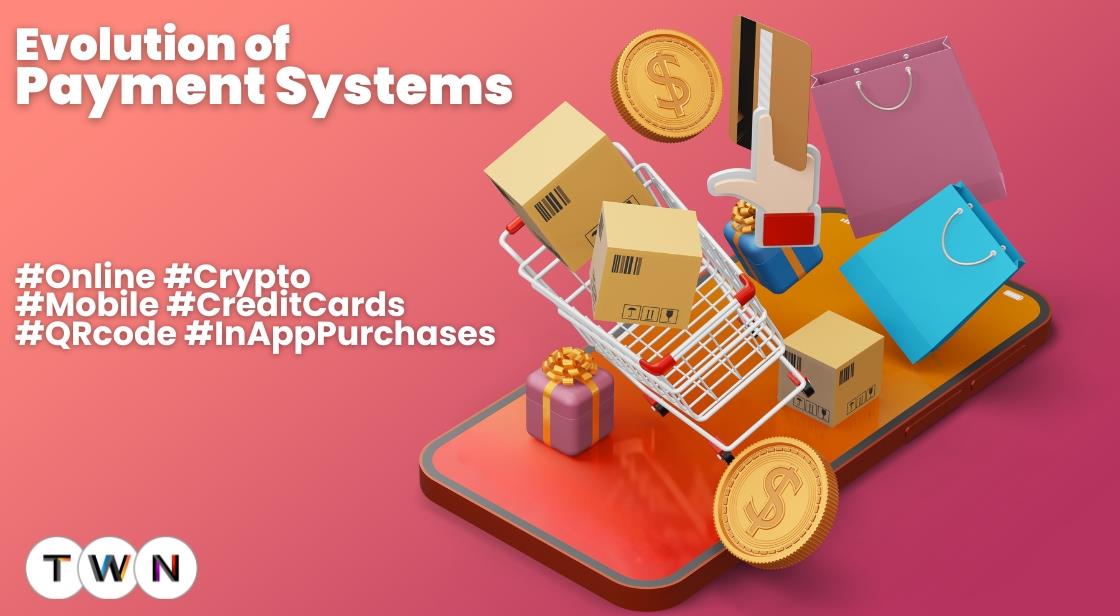How Payment Systems Have Evolved

Blog Post
The evolution of payment systems is a captivating tale of human innovation and adaptation. It traces the profound changes in how we exchange value, from ancient barter systems to the cutting-edge technologies of the 21st century.
In this article, we embark on a journey through time, exploring the pivotal moments that have shaped the way we conduct financial transactions.
Our exploration begins with a glimpse into the distant past, where goods were exchanged directly, and we advance through the ages, witnessing the rise of coins, paper currency, credit cards, and the advent of the internet.
We'll delve into the transformative impact of digital payments, contactless transactions, and the omnipresence of smartphones in today's payment landscape.
In this ever-evolving landscape, one thing is certain: the way we pay for goods and services will continue to transform. The pace of change may be exhilarating, but it's crucial to strike a balance between innovation and the need for users to adapt.
As we embrace the future, we do so with the expectation that our payments will become swifter, more secure, and seamlessly integrated into our lives.
Join us on this captivating journey through the history and future of payment systems, where the past illuminates the path forward in an ever-changing financial world.
The way we pay for goods and services is constantly updating and evolving. We could go all the way back to bartering and exchanging for goods as our starting point. But so much has happened in just the last 30 or 40 years that it is more important to look at how our lives have changed since the late 20th century.
Everything has changed so rapidly in recent decades that it is interesting to question whether payment systems have kept up with the changing world – or if the world has changed because of the way we have learned to make payments quicker and more efficient. In reality, it is probably a little of both.
From bartering to coins and notes to cards to payment systems like WebMoney – and alternatives, such as cryptocurrency – how we make our payments has dramatically changed. But how did we get to this point? Where exactly are we now? And what do the payment systems of the future have in store for us?
How Payment Systems Have Evolved
The Jump to Digital
We sometimes think of digital payments and online transactions as a relatively modern invention. But the first credit card terminals emerged in the late 1970s and from there, payment providers have been developing ever-new ways of making financial transactions.
The rise in the use of the internet obviously opened the door for technological advances and newer ways of payment. Amazon launched in 1994 and eBay arrived soon after. We soon got used to paying for goods online and not relying on the coins and paper currencies that had ruled our lives just years earlier.
Contactless
Contactless payments didn’t need the recent COVID global pandemic to make themselves well known and used. But even those who had resisted this simple way of paying for goods jumped at the chance to make their physical transactions in a way that lessened the risk of infection and illness.
Being able to “tap-and-go” was obviously heralded as a more hygienic way to conduct financial transactions but the security issues remained. Nevertheless, it is a very efficient and quick way of paying for goods and has now become far more common than even just four years ago.
Mobile Payments
The wider use of smartphones – and the technological advances made by their manufacturers – in the early 2000s brought mobile payments to the fore as a payment alternative. Apple Pay and Google Pay users can easily use their phones to pay for goods, with all the financial details securely stored.
These mobile payment systems have made transactions safe and efficient, while also following the trend for carrying fewer accessories. The smartphone is at the center of our universe and has been our watches and clocks for a long time. Now it has taken over our need to carry a wallet as well.
Cryptocurrency
There are literally hundreds of different cryptocurrencies to choose from these days – with more and more being introduced and launched all the time. For a digital currency like this to really take off as a viable payment system, there has to be some kind of mainstream support. As in the case of Bitcoin and Ethereum.
Using blockchain technology that increases security, speeds up transactions, and retains privacy while offering full transparency, crypto has really taken off. Although there is fairly widespread use already, we are only in the early days and we could expect to see even more usage in the coming years – especially if more regulation is introduced.
Also Read: Top Money-Making Apps for Quick Earnings
Artificial Intelligence and Augmented Reality
Artificial intelligence (AI) and augmented reality (AR) have already become part of the “brand new world” we are currently enjoying. There is a fierce debate about the use of AI, as detractors air their concerns about it taking over and the way it can be used to nefarious ends.
But there is also evidence that AI will be able to speed up areas of security and consumer experience. By taking care of the menial processes, AI will be able to make payments much easier. AR is also offered as a way of helping with making the choices of what we are buying in the first place.
The Challenge of Cybersecurity
It is something of an irony that many of the technological developments that have helped with making financial transactions and payments more secure and speedier, also bring with them their own issues. One of the biggest that any payment developer has to think about is the idea of cybersecurity.
When all we used were paper notes, there was just the risk of having those actual notes stolen. With our savings mere numbers on a computer screen, there is a risk there too. Now more of our personal and financial data is stored online, it is even important to ensure that security is a top priority – and that regulatory organizations are able to deal with any criminal activity.
The Future
It is clear that the way we pay for goods and services has evolved in line with technology – and inspired and spurred it on in equal measure. While cryptocurrency and blockchain technology continue to look like part of our future, there is also the likelihood that mobile payments become even more popular in the years to come.
With all the developments and advances we have made in the past, there has been a gradual implementation, while recognizing the need to continue older forms of transaction as well.
This is something that has to continue as newer forms are invented. If anything, this is more important if the advances are made as quickly as they have been in the last 10-20 years.
Greater use of mobile and digital payment is inevitable. As long as there is an understanding on the side of the developers, that the consumers need time to adjust, our payments should become even quicker and more secure in the future.
You May Like
EDITOR’S CHOICE












